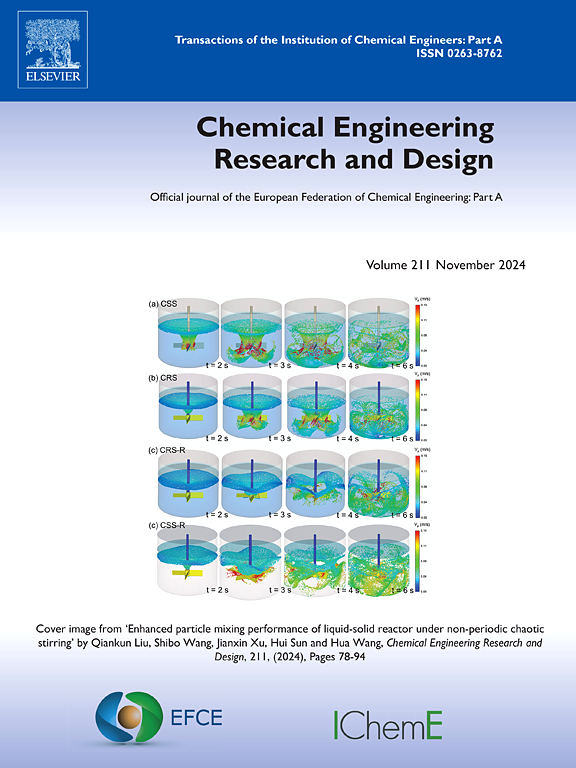考虑两相流分布的大规模 PEM 燃料电池网状过渡区再优化设计
IF 3.7
3区 工程技术
Q2 ENGINEERING, CHEMICAL
引用次数: 0
摘要
流场板(FFP)中的流动分布对大规模质子交换膜(PEM)燃料电池的性能和耐用性有重大影响。现有研究大多只关注气相流,而实际电池运行时是气液两相流。本研究对三维燃料电池的单相流和两相流分布进行了数值模拟。变异系数(CV)被定义为通道中速度的标准偏差与平均值之比,是流动均匀性的指标。首先,阐明了 FFP 与我们之前建造的组合式网状过渡区的气体和两相流动分布特征之间的差异。其次,提出了一种重新优化的布局,即在分配区设置水平网孔,并在收集区增加水平网孔。阐明了基于流量和阻力耦合调节机制的设计理念和方法。单相和两相 CV 值分别进一步降低了 41.25 % 和 6.05 %。第三,将重新优化的结构应用于不同的 FFP 几何结构,包括更小的开发空间和更大的单元面积,验证了其对流量分布的卓越效果。本文章由计算机程序翻译,如有差异,请以英文原文为准。
A re-optimized design of mesh-type transition zone for large-scale PEM fuel cells considering two-phase flow distribution
The flow distribution in the Flow Field Plate (FFP) has a significant impact on the performance and durability of large-scale Proton Exchange Membrane (PEM) fuel cells. Most of the existing studies focused only on gas-phase flow, while the actual cell operation is gas-liquid two-phase flow. In this study, numerical simulations of single- and two-phase flow distributions are performed for three-dimensional FFPs. The Coefficient of Variation (CV), defined as the ratio between the standard deviation and the mean of the velocities in channels, serves as the indicator of flow uniformity. Firstly, the differences between gas- and two-phase flow distribution characteristics of the FFP with the combined-mesh-type transition zone we previously constructed are elucidated. Secondly, a re-optimized layout with horizontal mesh apertures in the distribution zone and the addition of horizontal mesh in the collection zone is proposed. The design philosophy and methodology based on the coupled flow and resistance regulation mechanism are elucidated. The single- and two-phase CV values are further reduced by 41.25 % and 6.05 %, respectively. Thirdly, the re-optimized structure is applied to different FFP geometries, including smaller development spaces and larger cell areas, where the superior effects on flow distribution are validated.
求助全文
通过发布文献求助,成功后即可免费获取论文全文。
去求助
来源期刊

Chemical Engineering Research & Design
工程技术-工程:化工
CiteScore
6.10
自引率
7.70%
发文量
623
审稿时长
42 days
期刊介绍:
ChERD aims to be the principal international journal for publication of high quality, original papers in chemical engineering.
Papers showing how research results can be used in chemical engineering design, and accounts of experimental or theoretical research work bringing new perspectives to established principles, highlighting unsolved problems or indicating directions for future research, are particularly welcome. Contributions that deal with new developments in plant or processes and that can be given quantitative expression are encouraged. The journal is especially interested in papers that extend the boundaries of traditional chemical engineering.
 求助内容:
求助内容: 应助结果提醒方式:
应助结果提醒方式:


